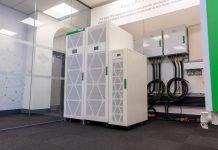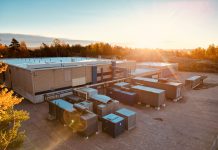 Greg Altria, associate consultant with SLR, provides an insight into the Environmental Permitting Regulations affecting mission critical sites
Greg Altria, associate consultant with SLR, provides an insight into the Environmental Permitting Regulations affecting mission critical sites
The Environmental Permitting Regulations (England and Wales) 2016 (as amended) (EPR) are used by the government to place controls on a whole range of activities that have the ability to impact the environment or human health. As it relates to data centres, the operation of generators for back-up purposes, triad avoidance and/or balancing services are regulated activities.
It should be noted that the regulations do not apply to Scotland or Northern Ireland. Although similar legislation does exist in these regions, the devolved administration’s interpretation of the relevant directives and application of additional controls differs to that in England and Wales.
In brief, the EPR require operators to obtain an environmental permit and comply with its conditions. The type of permit required and its associated conditions depend on its aggregated thermal input, the operating regime and its application as Figure 1 (see below) illustrates.
Part A(1) IED permits are complex. They contain conditions relating to management systems, energy efficiency, efficient use of raw materials, waste generation and management, storage of fuels and oils, operating hours, emissions and monitoring, noise and vibration, record keeping, reporting and notification. Operators have to apply ‘best available techniques’ (BAT) to ensuring risks to the environment are controlled, unless the cost of applying BAT is disproportionate to the environmental benefits in which case derogations can be applied for.
In principle, Part B, Specified Generator and Medium Combustion Plant Directive (MCPD) permits are simple in nature.
They should only seek to regulate impacts associated with emissions to air such that the permits contain conditions relating to monitoring, record keeping, reporting and notification.
In practice, this can have significant implications for data centres. Unless generators are operated for emergency back-up purposes only (including associated testing) and for less than 50 hours/year each, they will be classed as ‘Specified Generators’.
Permits for Specified Generators establish limits on the concentration of oxides of nitrogen which must be complied with. Similarly, permits for medium combustion plant (MCP) contain limits where the operating hours for the aggregated plant exceeds 500 hours/year on average.
For diesel generators, the limits necessitate secondary abatement to be installed.
What are the cost implications of abatement technologies?
The emissions from generation plant are common to all combustion processes and relate to the temperature of combustion and the excess air entrained within the combustion stages.
Therefore, the fuel used is a significant factor in determining the necessity for abatement technologies to aid reducing emissions levels and ensuring compliance. In general, natural gas fuelled generation plant sets the standards and usage of existing and standard catalytic converters and optimised generator set-ups meet the requirements.
However, for diesel fired generation plant full compliance with the strictest requirements for reduced emissions will require additional abatement technologies. The optimum level of emission abatement for diesel fired plant will require SCR (Selective Catalytic Reduction) technology utilising injection of a urea/ammonia solution into the exhaust system before passing across a catalyst to accelerate and optimise conversion and abatement of NOx generated. Such a system will nominally cost between £90,000 and £150,000 for a generator unit of approximately 1-2MWe.
The systems generally can be mounted on top of a generator container (subject to structural/support requirements) and require some additional controls to monitor the temperature of the exhaust and the injection of additive. The additives will also require some additional tank for storage.
How will it be enforced/ policed?
The Environment Agency (EA)and Natural Resources Wales (NRW) are the regulators in England and Wales respectively for all the aforementioned permits. Compliance is assessed by the regulators using a combination of desk-based reviews, site audits and emissions monitoring. The amount of time spent by the regulators in regulating a site typically reflects its risk. More complex and non-compliant sites are given more attention, for example. A scoring system is employed by the regulators for non-compliances. Sites are scored for non-compliances depending on the potential severity of the environment impact. Sites are categorised depending on their compliance rating and their annual permit subsistence fees are adjusted using multipliers. For example, operators of an E-rated site will pay 50% more in annual subsistence fees than a B-rated site. The EA and NRW have enforcement powers that include the provision of suspension notices, enforcement notices and, ultimately, prosecution comprising criminal sanctions and fines via the Courts.
Are gas generators affected or just diesel?
The regulations encompass generators of all fuel types. However, gas fuelled generators are typically able to comply with the emissions limits without secondary abatement.
What action do data centres need to take?
Data centres qualifying under the Industrial Emissions Directive (IED) and Part B environmental permits should already have a permit in place.
New sites or those installing new plant should have a permit in place prior to commencement of operations if the new/expanded operations qualify.
To obtain a permit, an application must be made to the EA/NRW which outlines how the operator will manage environmental and human health impacts associated with the operation and ensure compliance with the permit’s conditions.
Permits for Specified Generators and MCP are forthcoming requirements. The timelines presented in Figures 2 and 3 provide key dates for MCPs and Specified Generators.
It should be noted that ‘existing’ MCPs can become ‘new’ if investments in refurbishment of an item of plant exceeds 50% of the investment cost for a new unit.
Similarly, Tranche A generators can become Tranche B generators if new capacity market agreements are made or if investments in refurbishment exceeds 50% of the investment cost for a new unit.
Where a combination of new and existing 1-5MW, 5-50MW and Tranche A and Tranche B generators exist on a site, the relevant date for permitting off all the units on a site is the earliest date.
How will it impact activities such as DSR?
In order to continue to provide demand-side response (DSR) services, or, participate in triad avoidance (if the generators operate for more than 50 hours per year), operators will need to retrofit secondary abatement to diesel generators to meet emission limits for Specified Generators. The economic viability of doing so will need to be assessed on a case by case basis.
The cost of obtaining the relevant permit and complying with its requirements must be taken into account.
Data centres should consider if the permit places any restraints on it which may affect their contractual obligations, and, consider the financial viability of continuing if the cost of compliance is significant.
DSR is here to stay as it is an effective way of balancing the supply of electricity generation to meet demand. However, the economics for using diesel generators to participate in this market will become much less attractive.






